Staff Pick Of The Week


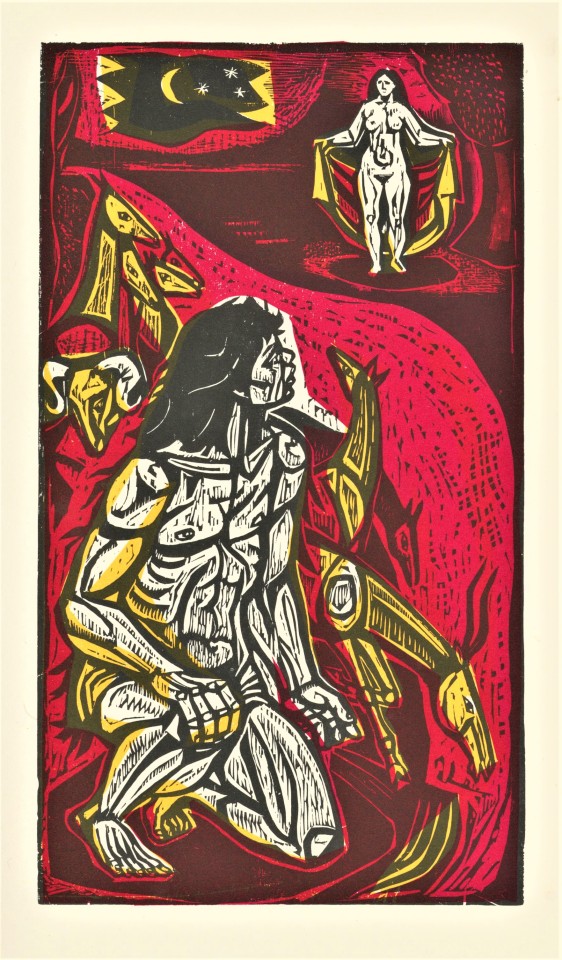
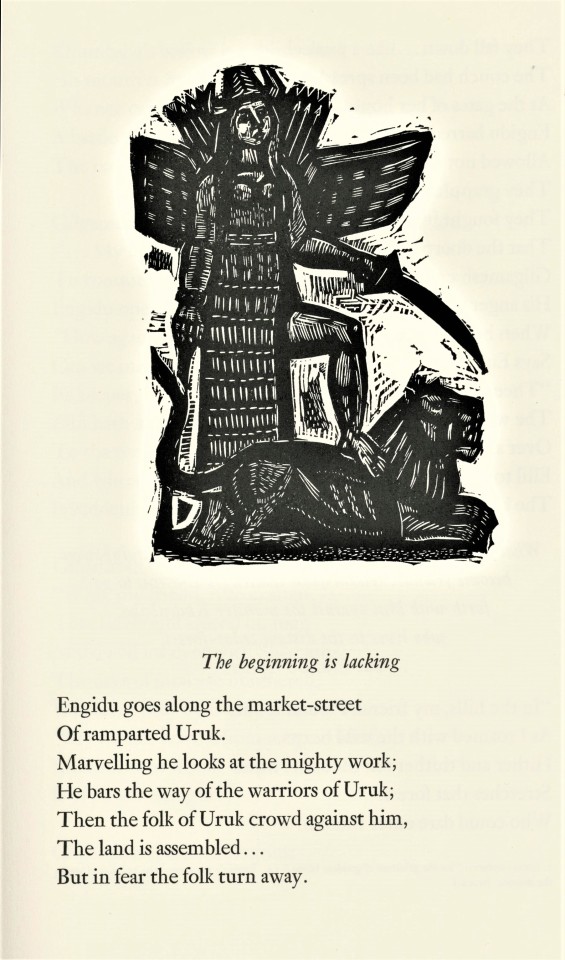
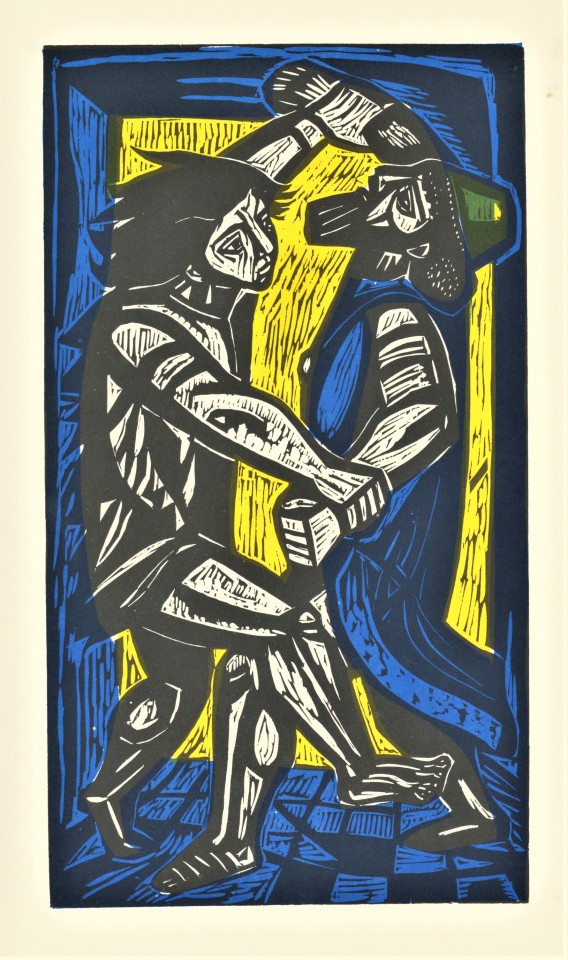

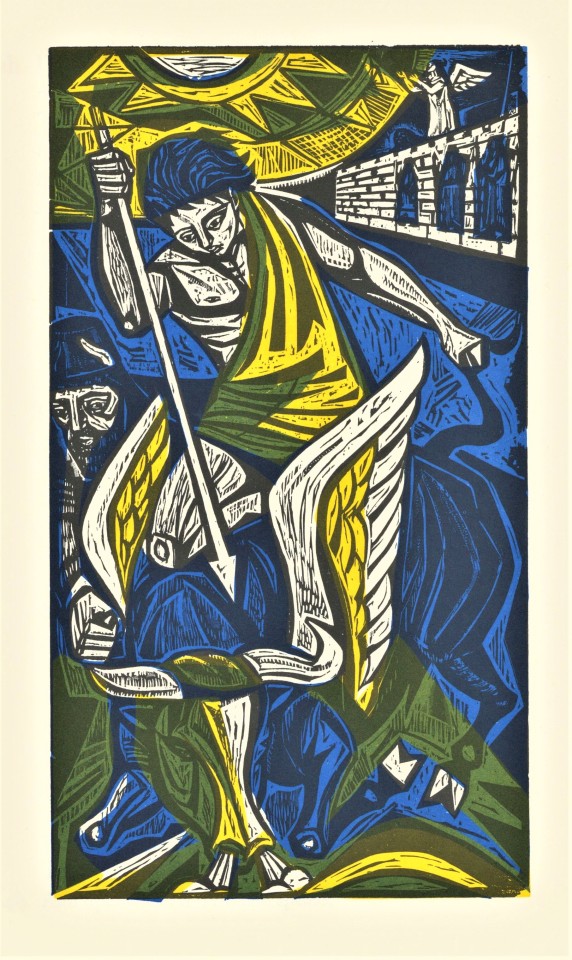

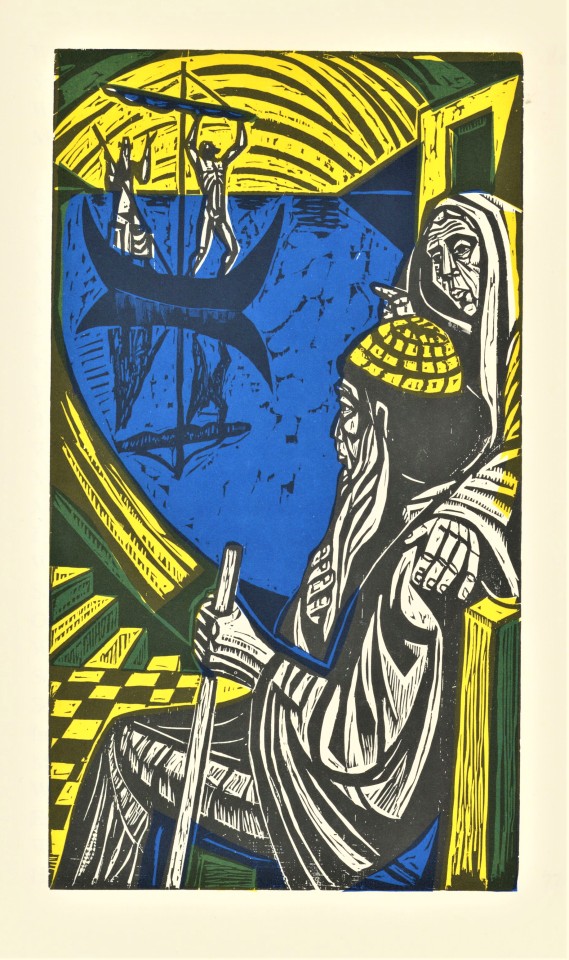

Staff Pick of the Week
A few weeks ago I read the Epic of Gilgamesh for the first time, and despite the fact that the origins of the story are probably from the mid-3rd millennium BCE, and the earliest cuneiform tablets we know the story from date from the late 2nd millennium BCE, the narrative’s emotional frame, and the frank depictions of sex, violence, fear, longing, and friendship, all felt remarkably contemporary to me. Just last week, Gilgamesh came up again in a discussion during a session of my course on the History of Books and Printing. Since Gilgamesh has had a recurring presence in my life this past month, I’ve decided to highlight some images and text from our copy of the Limited Editions Club production of Gilgamesh, translated by William Ellery Leonard and printed in 1974 at The Stinehour Press in Lunenberg, Vermont, in an edition of 2,000 copies.
The book includes nine bold three-color woodcuts and seven black-and-white woodcuts and linocuts by the American visual artist Irving Amen (1918-2011), who also signed the entire edition. The text is printed in the Club’s proprietary eighteen-point Janson type, with thirty-six-point Trump Gravure wedge-serif capitals for the titles. The woodcuts beautifully capture every significant scene in the epic. Click on the images to view the captions.
View more posts on the Limited Editions Club.
View more posts with woodcuts.
View more of our Staff Picks.
– MAX, Head, Special Collections
More Posts from Winedarkfag and Others

























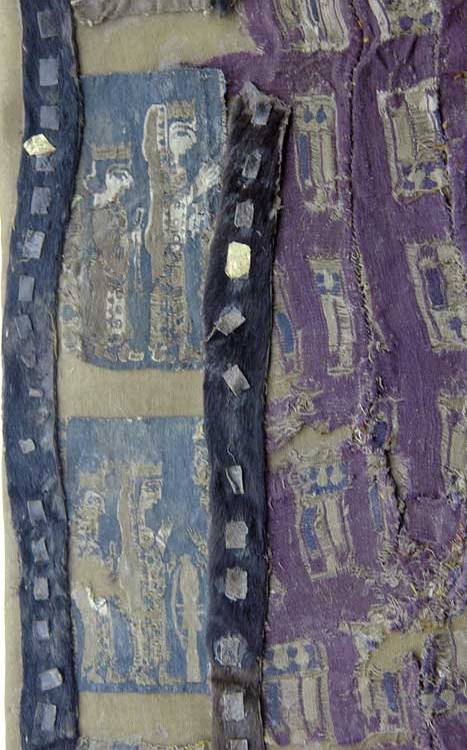




Scythian mummy tomb (Fifth Pazyryk Kurgan), Pazyryk culture 3rd C. BCE. More pictures on my blog, link at bottom.
"The pair were buried alongside nine horses, a huge cache of cannabis and a stash of priceless treasures - including the world's oldest carpet and an ornate carriage.
The man had curly hair and was aged between 55 and 60 when he died, whilst the woman was about ten years younger.
It is believed he was a chieftain or king of the Pazyryk civilisation, which lived in Kazakhstan, Siberia and Mongolia from the 6th to 3rd centuries BC."
...
"The attractive log cabin was a prefabricated construction by the prehistoric Pazyryk culture to house an elite tomb - in which was buried a mummified curly-haired potentate and his younger wife or concubine.
The mound in the Altai Mountains was originally 42 metres in diameter, and this tattooed couple went to the next life alongside nine geldings, saddled and harnessed.
The house itself, recently reconstructed, was not built as a dwelling but nevertheless is seen by archeologists as showing the style of domestic architecture more than two millennia ago.
This structure was the outer of two wooden houses in the large burial mound in the valley of the River Bolshoy Ulagan at an altitude of around 1,600 metres above sea level.
The core of the mound including the ice-preserved bodies of the elite couple had been excavated by Soviet archeologists in 1949, and many of the finds are on on display in the world famous State Hermitage Museum in St Petersburg.
As we have previously written, the pair - who owned perhaps the world’s oldest carpets - are currently undergoing an ultra modern medical scan to establish the cause of death, and reconstruct the appearance of the ancient pair, and to study the techniques of mummification in more detail.
Yet in 1949 this fascinating house was left in the permafrost ground - and only retrieved now from the so-called Fifth Pazyryk Barrow, to the excitement of archeologists.
Head of the excavation Dr Nikita Konstantinov from Gorno-Altaisk State University, was full of admiration about the skills of the ancient craftsmen.
‘We took out the log house and reassembled it right next to the mound,’ he said.
‘We made kind of express reconstruction, which made it possible to study the log house in detail.
‘Notches were made on each of its logs - building marks…’.
This was like IKEA instructions today for building their products, telling modern day excavation volunteers how to correctly construct the prehistoric building kit.
The result is seen in the pictures shown here.
‘This log house was first built somewhere away from the mound, then it was dismantled, brought and reassembled in the pit,’ said Dr Konstantinov.
‘Today we build in similar way, using Roman numerals, as a rule.
‘In those times they simply made different numbers of notches.’
The archeological team followed the code left by the ancient craftsmen and reassembled the house without problems.
‘The Pazyryks knitted the corners of the building in a masterly way and chopped the attachment points of these logs.
‘They fitted very cleanly….
‘When we built the log house and began to measure the height, it turned out that the height difference in the angles is only one centimetre.’
In modern constructions, a difference of 7 cm is allowed which showed how skilful were the ancient craftsmen.
He said: ‘This is a funerary structure, but we can say with a high degree of probability that the log cabin was created in the image and likeness of the houses in which the Pazyryks lived."
-taken from siberiantimes and thesun

Rabies is an incredibly lethal virus that kills more than 50,000 people globally each year. About 99% of those people who die from rabies were infected by the bite of a dog. This doesn’t mean that dogs are evil, or that they are disgusting, or that they should be eradicated from the planet to prevent the risk of disease transmission to humans. It does mean that we should do everything in our power to promote vaccination efforts, study disease transmission on a local and global scale, and find ways to prevent infected dogs from encountering and biting humans.
Okay, now are you ready to hear my biggest personal biology hot take?
This is pretty much how I feel about ticks carrying Borrelia burgdorferi (the bacteria that causes Lyme disease) and other arthropod disease vectors. Yes, these animals cause unbelievable suffering to humans by inadvertently transmitting disease, but that doesn’t mean they should be portrayed as evil or exterminated entirely from the environment. Ecologists have been speaking for years on how critical these species are within their established trophic webs, and how their removal could have devastating effects to many other organisms including humans. You can still be scared of or grossed out by these animals (very normal response to a potentially dangerous disease vector), but it’s important to understand that the best way for scientists to minimize the risk of these animals is NOT just eliminating them from the environment. No animal is evil or immoral for the ecological niche it fills, and encouraging a more nuanced understanding of these animals can arm us with better ways to minimize their negative impact to humans.
i have a weird appreciation for Baroque artists, in particular Francois Boucher and Peter Paul Rubens, for depicting the human body in lush detail at a time that predates the standards for bodies to be thin and airbrushed with no wrinkles or cellulite
it’s just really interesting to me










so many the things women are taught to hate about their bodies—pudgy bellies, fat rolls, double chins, and cellulite—used to be ideals of beauty shown in depictions of goddesses























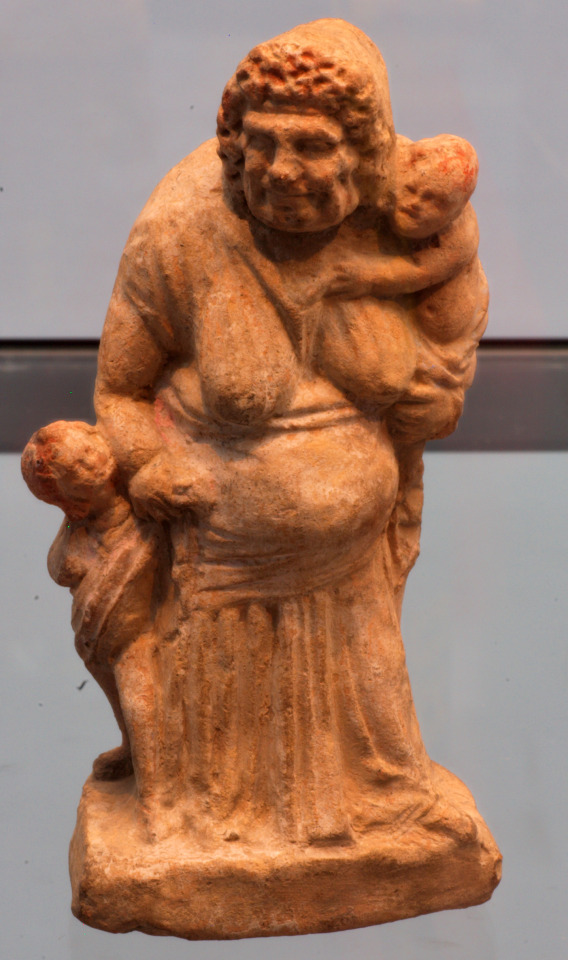




I have a folder called Time is a Flat Circle in which I collect evidence of humanity. Here is most of them.



Phoenician Bowls from the Regolini-Galassi Tomb c. 700 BCE? Caere, Italy "The Regolini-Galassi tomb is one of the wealthiest Etruscan family tombs in Caere, an ancient city in Italy approximately 50–60 kilometres (31–37 mi) north-northwest of Rome. The tomb dates to between 680/675-650 BC. Based on the evidence of the tomb's architecture and its contents, it was built by a wealthy family of Caere. The grave goods included with the two decedents included bronze cauldrons and gold jewellery of Etruscan origin in the Oriental style." Source: Grifi, Luigi (1841) (in Italian) Monumenti di Cere antica spiegati colle osservanze del culto di Mitra


Jeweled medici dagger, ca. 1840










Toshiro Mifune as Detective Murakami in Stray Dog (1949) dir. Akira Kurosawa
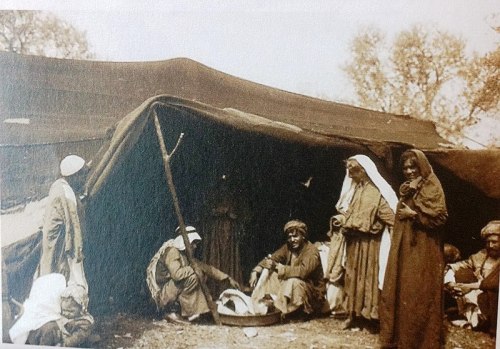






Domari people (middle eastern romani) of Palestine
(1) A domari tent in Jerusalem near the Damascus Gate, 1920s
(2) A domari street circus in Jerusalem, 1905
(3) Domari dancer and musician in Mandatory Palestine, 1930s
(4) Domari settlement at the north of the Damascus Gate, 1914
(5) Domari musician and dancers in Galilee, 1920s
(6) Domari women and children in a domari settlement in Mandatory Palestine, 1920s
7) Domari woman with seashells in the hand to tell fortune, near the sea of Galilee in Palestine, 1930s


so says the greek chorus



questions
-
 hyperikone reblogged this · 7 months ago
hyperikone reblogged this · 7 months ago -
 hyperikone liked this · 7 months ago
hyperikone liked this · 7 months ago -
 hay-is-gay reblogged this · 9 months ago
hay-is-gay reblogged this · 9 months ago -
 crocutaspelaea liked this · 1 year ago
crocutaspelaea liked this · 1 year ago -
 escoteriica liked this · 1 year ago
escoteriica liked this · 1 year ago -
 dog-house-riley liked this · 1 year ago
dog-house-riley liked this · 1 year ago -
 mermanonfire liked this · 1 year ago
mermanonfire liked this · 1 year ago -
 cyrus-the-younger liked this · 1 year ago
cyrus-the-younger liked this · 1 year ago -
 18electrons liked this · 1 year ago
18electrons liked this · 1 year ago -
 treestar liked this · 1 year ago
treestar liked this · 1 year ago -
 gilgamesh-nation reblogged this · 1 year ago
gilgamesh-nation reblogged this · 1 year ago -
 electricalpylon reblogged this · 1 year ago
electricalpylon reblogged this · 1 year ago -
 electricalpylon liked this · 1 year ago
electricalpylon liked this · 1 year ago -
 negative1humans reblogged this · 1 year ago
negative1humans reblogged this · 1 year ago -
 theamazingmurderrocks reblogged this · 1 year ago
theamazingmurderrocks reblogged this · 1 year ago -
 theamazingmurderrocks liked this · 1 year ago
theamazingmurderrocks liked this · 1 year ago -
 asmiraofsheba reblogged this · 1 year ago
asmiraofsheba reblogged this · 1 year ago -
 kilzag liked this · 1 year ago
kilzag liked this · 1 year ago -
 jadedmailman liked this · 1 year ago
jadedmailman liked this · 1 year ago -
 possumgottadoobie liked this · 1 year ago
possumgottadoobie liked this · 1 year ago -
 on-my-way-to-temeria liked this · 1 year ago
on-my-way-to-temeria liked this · 1 year ago -
 marysmirages liked this · 2 years ago
marysmirages liked this · 2 years ago -
 finchsposts reblogged this · 2 years ago
finchsposts reblogged this · 2 years ago -
 treekoguy-99 reblogged this · 2 years ago
treekoguy-99 reblogged this · 2 years ago -
 treekoguy-99 liked this · 2 years ago
treekoguy-99 liked this · 2 years ago -
 instabilitylili liked this · 2 years ago
instabilitylili liked this · 2 years ago -
 deepphilosopherdreamer reblogged this · 2 years ago
deepphilosopherdreamer reblogged this · 2 years ago -
 deepphilosopherdreamer liked this · 2 years ago
deepphilosopherdreamer liked this · 2 years ago -
 dandelyle reblogged this · 2 years ago
dandelyle reblogged this · 2 years ago -
 fearevil liked this · 2 years ago
fearevil liked this · 2 years ago -
 troutsimulator liked this · 2 years ago
troutsimulator liked this · 2 years ago -
 vcsabertooth liked this · 2 years ago
vcsabertooth liked this · 2 years ago -
 rossodimarte liked this · 2 years ago
rossodimarte liked this · 2 years ago -
 scopophilic1997 liked this · 2 years ago
scopophilic1997 liked this · 2 years ago -
 pietroalberto reblogged this · 2 years ago
pietroalberto reblogged this · 2 years ago -
 pietroalberto liked this · 2 years ago
pietroalberto liked this · 2 years ago -
 mykcfu liked this · 2 years ago
mykcfu liked this · 2 years ago -
 1mikel2 liked this · 2 years ago
1mikel2 liked this · 2 years ago -
 bko69er liked this · 2 years ago
bko69er liked this · 2 years ago -
 itsloriel liked this · 2 years ago
itsloriel liked this · 2 years ago -
 happyzenmonk reblogged this · 2 years ago
happyzenmonk reblogged this · 2 years ago -
 now-safe-for-consumption liked this · 2 years ago
now-safe-for-consumption liked this · 2 years ago -
 kvne393 reblogged this · 2 years ago
kvne393 reblogged this · 2 years ago
